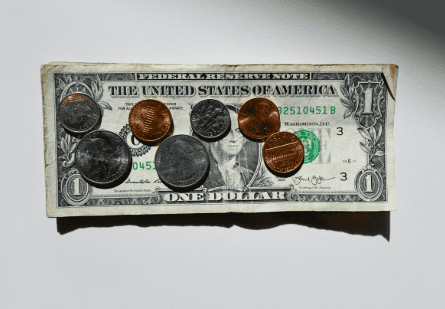In recent months, the United States has been making progress in bringing down inflation – the rate at which prices increase. However, in October, that progress appeared to slow down. According to the latest report from the US Labor Department, consumer prices rose by 2.6% over the 12 months leading up to October, which is a slight increase from the 2.4% rise noted the previous month. This change is primarily due to the increase in housing and food costs, two areas that have seen steady price hikes.
What’s Driving the Inflation?
The rise in housing and food costs has been a big factor in pushing up inflation. Housing, which includes things like rents and homeownership costs, rose by about 4.9% over the past year. Since housing has a large impact on the overall price index in the US, it has contributed significantly to the inflation numbers. Food prices, as well, have continued to climb, putting more pressure on household budgets.

Additionally, car insurance costs have seen a sharp rise, going up by more than 14% compared to a year ago. Other areas, such as medical care and education, have also seen cost increases, adding to the overall inflation rate. Meanwhile, the price of gasoline has dropped by 12% over the last year, serving as a notable exception in a sea of price increases.
The Federal Reserve’s Approach to Inflation
The Federal Reserve, which is the central bank of the United States, is responsible for managing inflation and stabilizing the economy. Its goal is to bring inflation down to around 2%, a level that is considered healthy for economic stability. To reach this target, the Federal Reserve has made adjustments to interest rates. In fact, the Fed began cutting interest rates in September, acknowledging that inflation had been brought down significantly from a high of over 9% in June 2022.
When inflation was very high, the Federal Reserve raised interest rates to slow down spending and borrowing, which in turn was expected to lower demand and bring down prices. Now that inflation is closer to the target, the Federal Reserve has started cutting rates gradually, hoping that the economy will continue to stabilize without the risk of prices rising too quickly again.
Why Interest Rates Are So Important
Interest rates are like the economy’s “speed controls.” When the Federal Reserve increases rates, it becomes more expensive for people and businesses to borrow money, which slows down spending and can help cool off inflation. When rates are lowered, borrowing becomes cheaper, which can encourage spending and stimulate economic growth. The Federal Reserve’s careful balancing act with interest rates is meant to keep the economy on a stable path, neither allowing inflation to run too high nor letting economic growth slow down too much.
The recent inflation data has raised questions about whether the Federal Reserve will continue with the same rate cuts it had planned. Some analysts are now suggesting that the Fed may have to be cautious in cutting rates further, as inflation still hasn’t fully stabilized.
Economic Uncertainty and Potential New Challenges
While there has been significant progress in controlling inflation, experts are warning that the road ahead might still be bumpy. As President-elect Donald Trump prepares to take office, he has proposed several policies, including tax cuts, tariffs on imports, and stricter immigration laws. Some economists believe that these policies might put additional pressure on businesses, possibly leading to further price increases. If businesses face higher costs due to tariffs or limited labor, they may raise prices, which could contribute to inflation.
Expert Opinions on the Inflation Outlook
Josh Jamner, an investment strategy analyst at ClearBridge Investments, commented that although inflation has come down from the high levels of last year, the “last mile” to fully stabilize prices is proving more challenging. He believes that the recent data doesn’t suggest any sudden changes in the market, as the figures were largely in line with what experts had predicted.
Lindsay James, an investment strategist at Quilter Investors, also commented on the situation, stating that while the inflation data matched expectations, the Federal Reserve is now faced with a complex decision regarding interest rates. She explained that without clear signals on where prices are headed, the Fed’s path forward on rate cuts remains uncertain.
The Impact of Inflation on Everyday Life
For many Americans, the rise in inflation has created significant challenges in everyday life. Housing costs, in particular, have been difficult for many to manage, as rent and home prices continue to increase. Food prices have also seen steady increases, making it harder for families to afford basic groceries.
The rising cost of car insurance, healthcare, and education also adds financial strain for many households. These price increases can make it challenging for families to save money, which impacts long-term financial stability.
On a positive note, the decrease in gasoline prices over the last year has provided some relief. However, since gasoline is only a part of people’s daily expenses, the overall cost of living remains high for many.

Inflation and the Political Landscape
Inflation was a key issue in the recent presidential election, with many voters concerned about rising prices. President-elect Trump’s victory has been partly attributed to his promises to address economic concerns, including inflation. The new administration is expected to face pressure to address inflation in a way that supports families struggling with rising living costs while ensuring businesses can operate effectively.
Looking Ahead
The Federal Reserve and policymakers will need to carefully consider how to address the current inflation challenges. Rate cuts are still possible, but the Fed may choose a slower approach to avoid triggering another round of high inflation. Analysts believe that the next few months will be crucial in determining whether inflation can continue to move towards the 2% target or if new challenges will arise.











